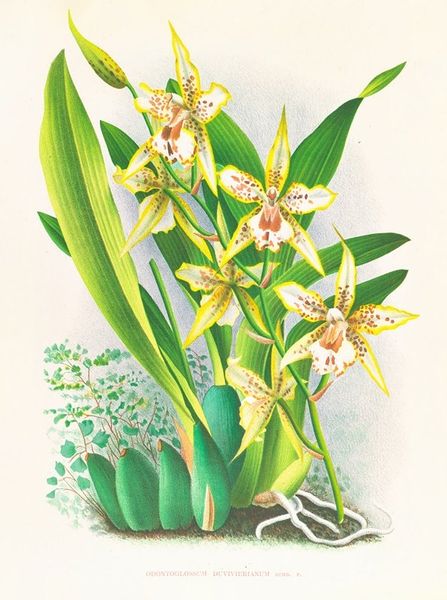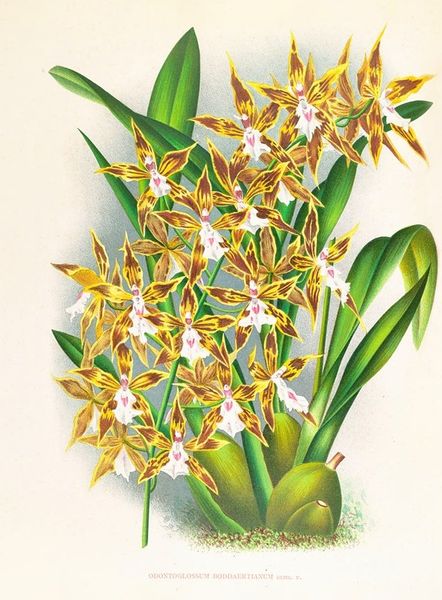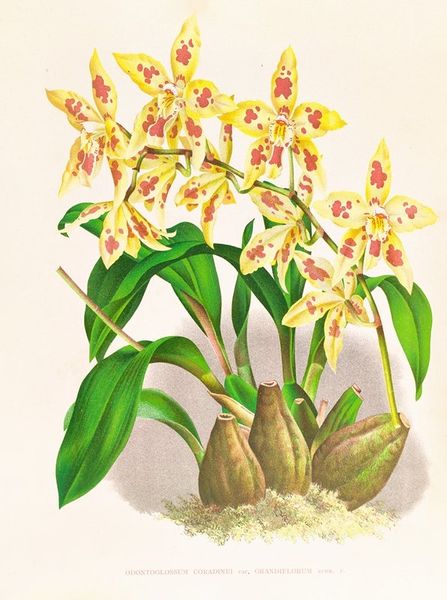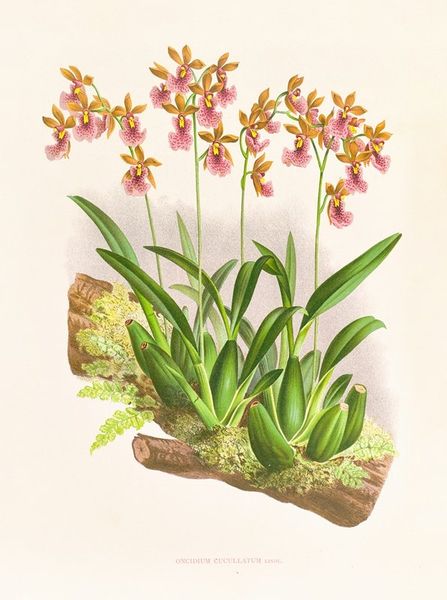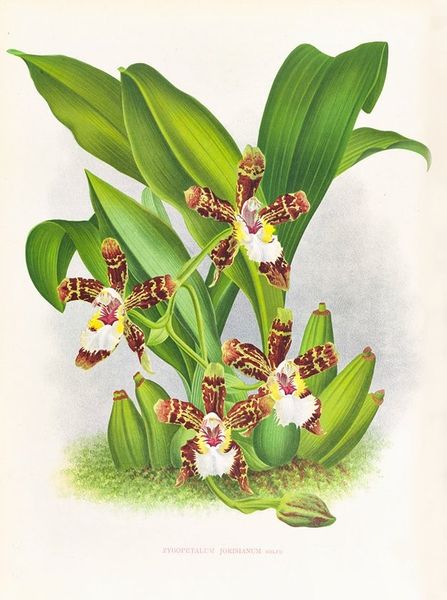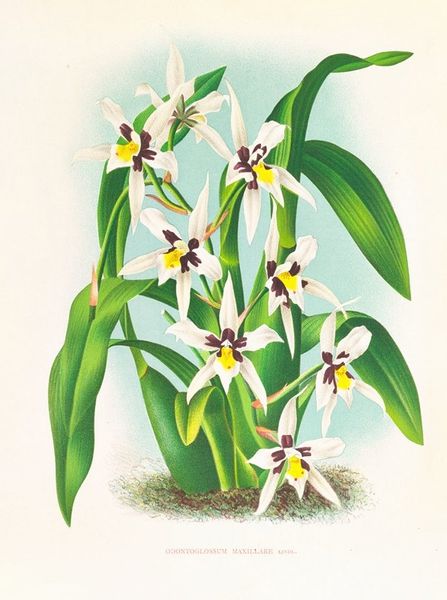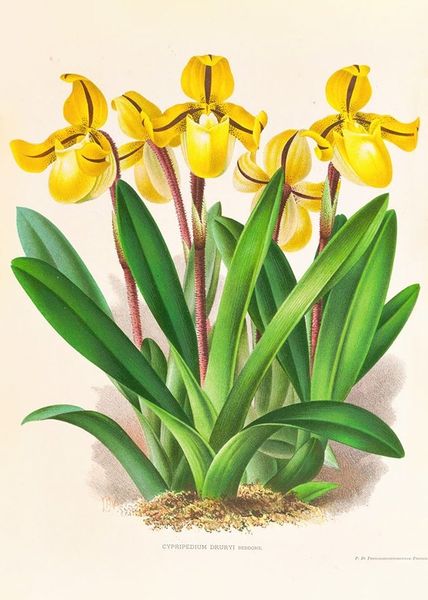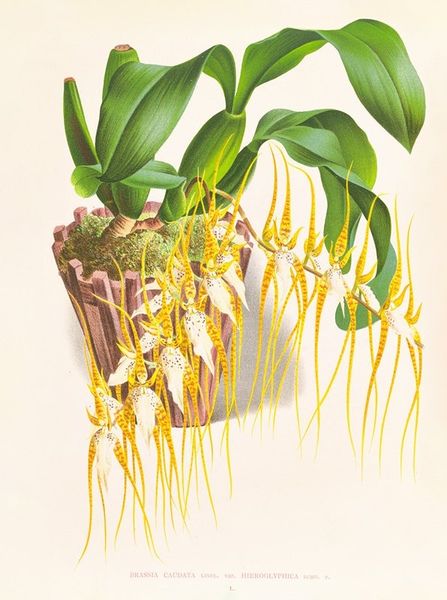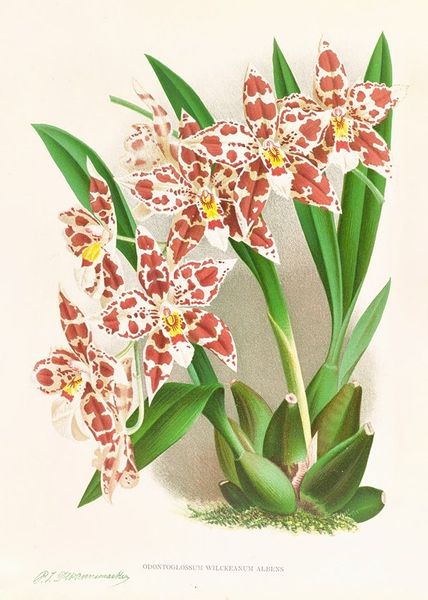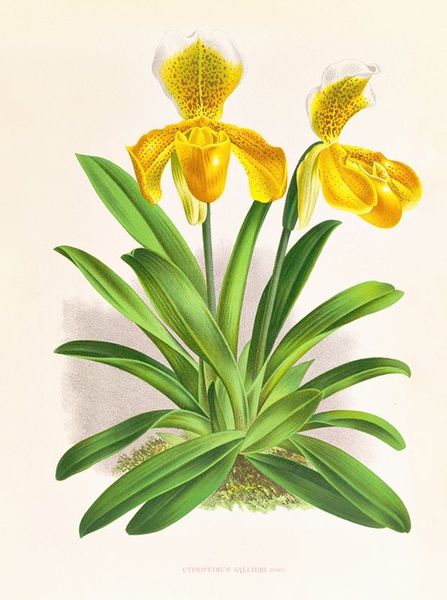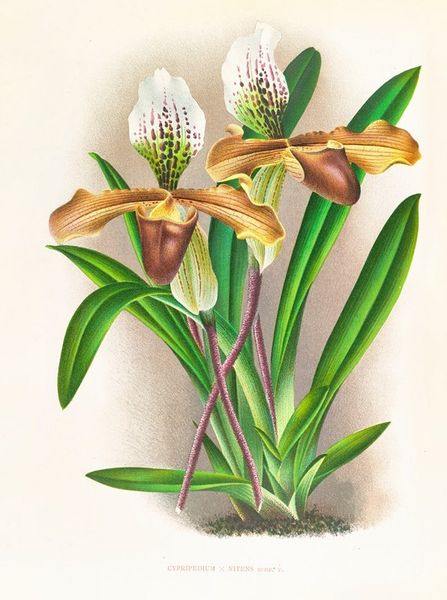
drawing
#
drawing
#
nature
#
botanical art
Copyright: Public Domain: Artvee
Editor: This is a drawing of Odontoglossum nevadense by Jean Jules Linden, created between 1885 and 1906. The crisp detail is striking. What stands out to me are the contrasting dark petals against the bright white centers, creating a sense of visual drama. How do you interpret this work? Curator: Well, looking at the Odontoglossum, its orchid family tells a silent story. Notice the distinct and elaborate shape, seemingly simple yet quite complex. Do you think it might mimic something else in nature? Think about the history of botanical illustration - often tied to exploration and the need to classify and understand the natural world. Editor: That's interesting. It reminds me a bit of a spider, maybe? And the level of detail suggests a real dedication to scientific accuracy as much as artistry. But how would a spider, if that was the intention, impact someone viewing the painting? Curator: Right, the spider resemblance might trigger something primal. Fear? Fascination? Early botanical illustrations had a very important function – informing us about medicinal plants. There is power to showing things this naturally and completely, the symbolism connects to the very human experience. The cultural memory embedded within this kind of image goes way back. What kind of person would want to remember something in their mind? Editor: So the artist might be using nature's symbolism to connect to broader human understanding. I never thought of botanical art holding so much cultural meaning beyond just, well, pretty flowers. Curator: Exactly! This art reminds us how deeply intertwined we are with the natural world, and the memory of it that lingers long after it blooms.
Comments
No comments
Be the first to comment and join the conversation on the ultimate creative platform.
